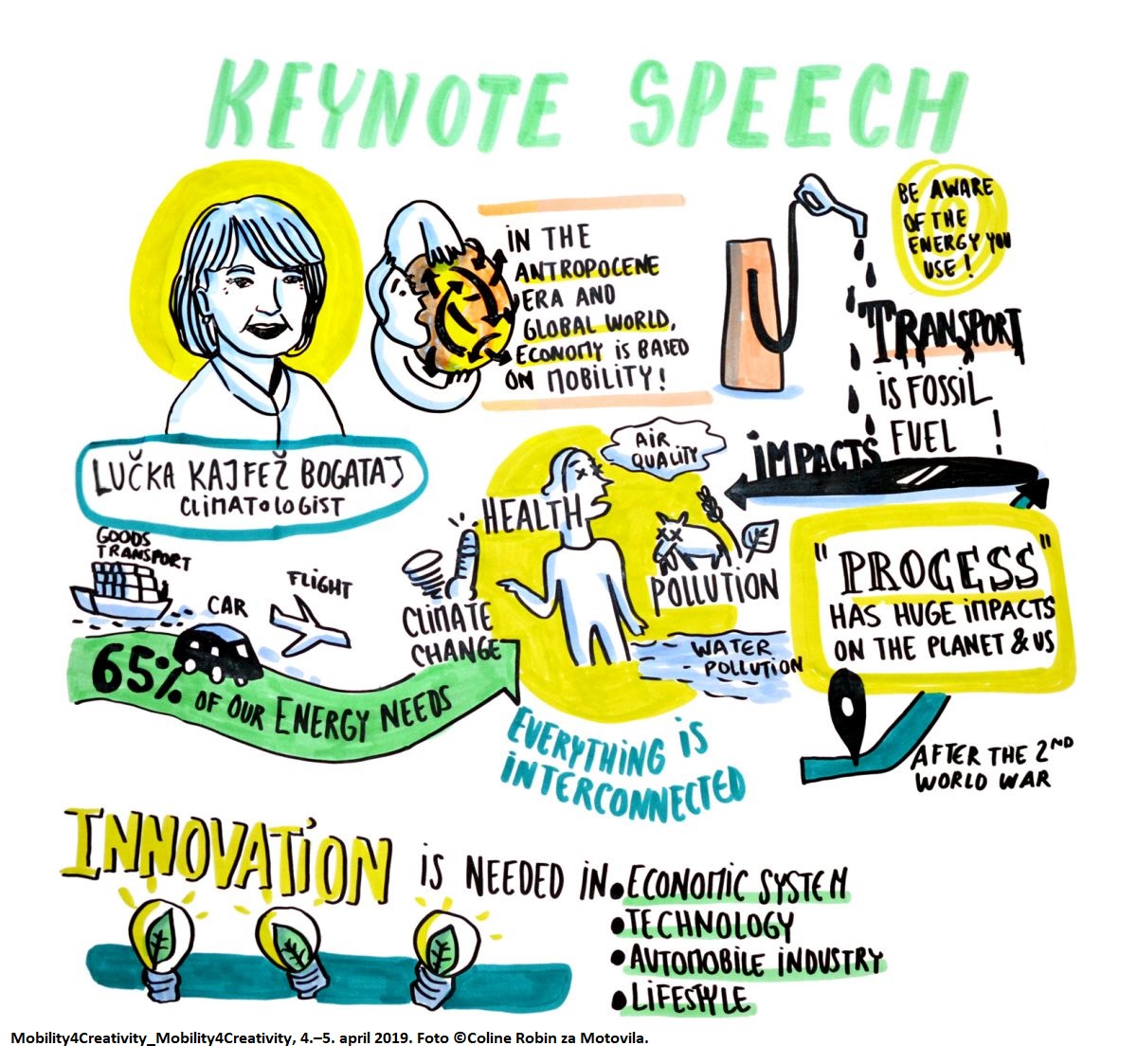
Pioneering climatologist Dr. Lučka Kajfež Bogataj presented the keynote address “Mobility and Environment in the Age of Transgressing Planetary Boundaries”.
Mobility refers to our systems of transporting goods fundamental for a functioning economy, and our personal/professional mobility, which can help us to develop best practices, grow a global network and provide exposure to new cultures/experiences. For artists, it can mean getting a break towards international recognition, learning new skills, meeting potential collaborators.
Looking at mobility from a perspective that considers our effect on the earth’s resources, environment and climate – air quality, noise pollution, and fossil fuel, water, and land usage, etc. – we might begin to question our motives and methods of engaging in mobility. And rightly so.
If the average European uses 125 kWh/day, then 82 kWh/day (nearly 66%) goes to transport (of food and consumer products), car and air travel. Just over 200 years ago, during the Napoleon era, a person’s average daily travel was 40 m; today it’s 40 km. The “dirtiness” of our journey is tied to our means of transportation: comparing CO2 emissions per person for a 1000 km journey, train travel emits 14 kg, bus 58 kg, car (occupied by driver only) 251 kg and plane 448 kg.
Says Dr. Kajfež Bogataj, the exponential impact of socio-economic trends and global air travel on planetary boundaries has led us to a moment where we’re no longer trying to leave things nice for our grandchildren, it’s about our future survival or not.
She calls for urgent institutional, infrastructural, economic, technological and social innovations, such as:
1. Creating institutions concerned about sustainable mobility that take human health, environmental conditions and natural resources into account;
2. Challenging architects, urban planners and politicians to develop infrastructure for accessible and environmentally-friendly travel, more public transportation, better railways.
3. Revamping economic models, e.g., making the price of travel correspond to our environmental impact. Says Kajfež Bogataj, “a plane ticket should cost 200€ more”.
4. Pressuring technological industries and engineers to maximise fuel and energy efficiency.
5. Questioning the role of mobility in our activities to bring mobility habits and desires into balance with the pressing need to live within environmental limits.
Back to FULL REPORT by Jana Renée Wilcoxen for Motovila, Ljubljana 2019.
CC Attribution-NonCommercial 4.0 International (CC BY-NC 4.0).
Further information about the #Mobility4Creativity conference.
The event was organized by the Motovila Institute in cooperation with Arts and Theatre Institute / CED CZ, DutchCulture / CED NL, Centro de Informacão Europa Criativa / CED PT, CED Ireland – MEDIA Office Dublin, Ministry of Culture of the Republic of Croatia / CED HR, Federal Chancellery of Austria, Arts and Culture / CED AT, SCCA–Ljubljana and CMEPIUS.

